
10-09-2025 23:53
 Marcel Heyligen
Marcel Heyligen
Found on Robinia pseudoacasia together with Diapor

10-09-2025 17:18
 Blasco Rafael
Blasco Rafael
Hola, encontre este estiercol de vaca estos apotec

03-09-2025 21:59
Philippe PELLICIERLa Léchère, Col de la Madeleine, alt 1970m, au s

07-09-2025 11:34
 Zuzana Sochorová (Egertová)
Zuzana Sochorová (Egertová)
Hello,I have identified this fungus as Hymenoscyph

02-09-2025 11:34
Thomas Læssøehttps://svampe.databasen.org/observations/10527903

05-09-2025 09:32
 Nicolas VAN VOOREN
Nicolas VAN VOOREN
Bonjour, hi everyone,Do you know where the fungari
 Hello Forum,
Hello Forum,on 14/02/20 I again collected a collection of Mollisia in a dune forest in Oostduinkerke, Belgium. The asco's grew on the underside of an old, fallen branch of Betula pendula.
I recently studied a collection of Mollisia cinerea that turned out to be Mollisia 'atlantica' nom.prov. A.Gminder.
This time it seems that I'm dealing with 'atlantica' again.
Can anyone confirm this?
° Apothetia measure max 2 mm in diameter.
° Ectal exipulum consists of dark olive-brown to blackish cells. Hymenium mouse gray and discolouring yellow on drying.
° KOH-
° Spores: 9.94 x 2.72 µm (N = 31); free spores 1-septated; spores in the asci 1-septated; a few small oil drops scattered in both halves.
° Some paraphyses club-shaped; most filled with non-refractive oil drops.
° Asci: J +; 62.71x5.11
I feel that 'atlantica', here on the coast anyway, is much more spread out than might be thought.
Many thx in advance.
Willliam

fotos are to small to see the spores.
Can you take pictures of the spores and put them here without reducing them?
Also the paraphyses? The descritpion sounds unlike Mollisia, or like dead material - then a spetation of the asci might also be due to overmaturity.
Can you give me the data of the other collection of Mollisia "atlantica" too, as I'm preparing a paper for publication in near future. And are there microfotos?
all the best,
Andreas


At Koksijde, Belgium 19/01/20 growing on the underside of an old branch half burried in the leaflitter in an old (= grey) dune.
Greets,
William


as Zotto said, the beforelast ascus shows the spore septation in still living ascus. The asci in the othe fotos are dead, but not for long time obviousely, as most of the parapyses are still showing a fully expanded vacuolar body.
My expercience in western France near the costs in spring showed that M. atlantica is the most common species there, growing often on small sized woody substrate, e.g. Ruscus, but also on "normal" wood. I think I have even found it on Miscanthus.
best regards,
Andreas


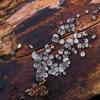
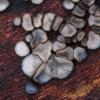

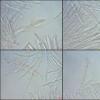
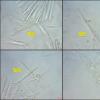
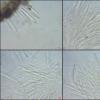

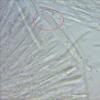
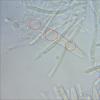
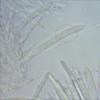
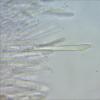
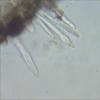
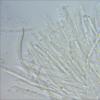
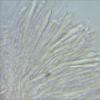
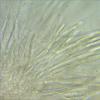
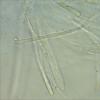
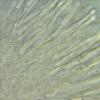
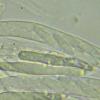
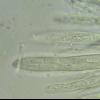
 Mollisia-atlantica-45--0001.jpg
Mollisia-atlantica-45--0001.jpg